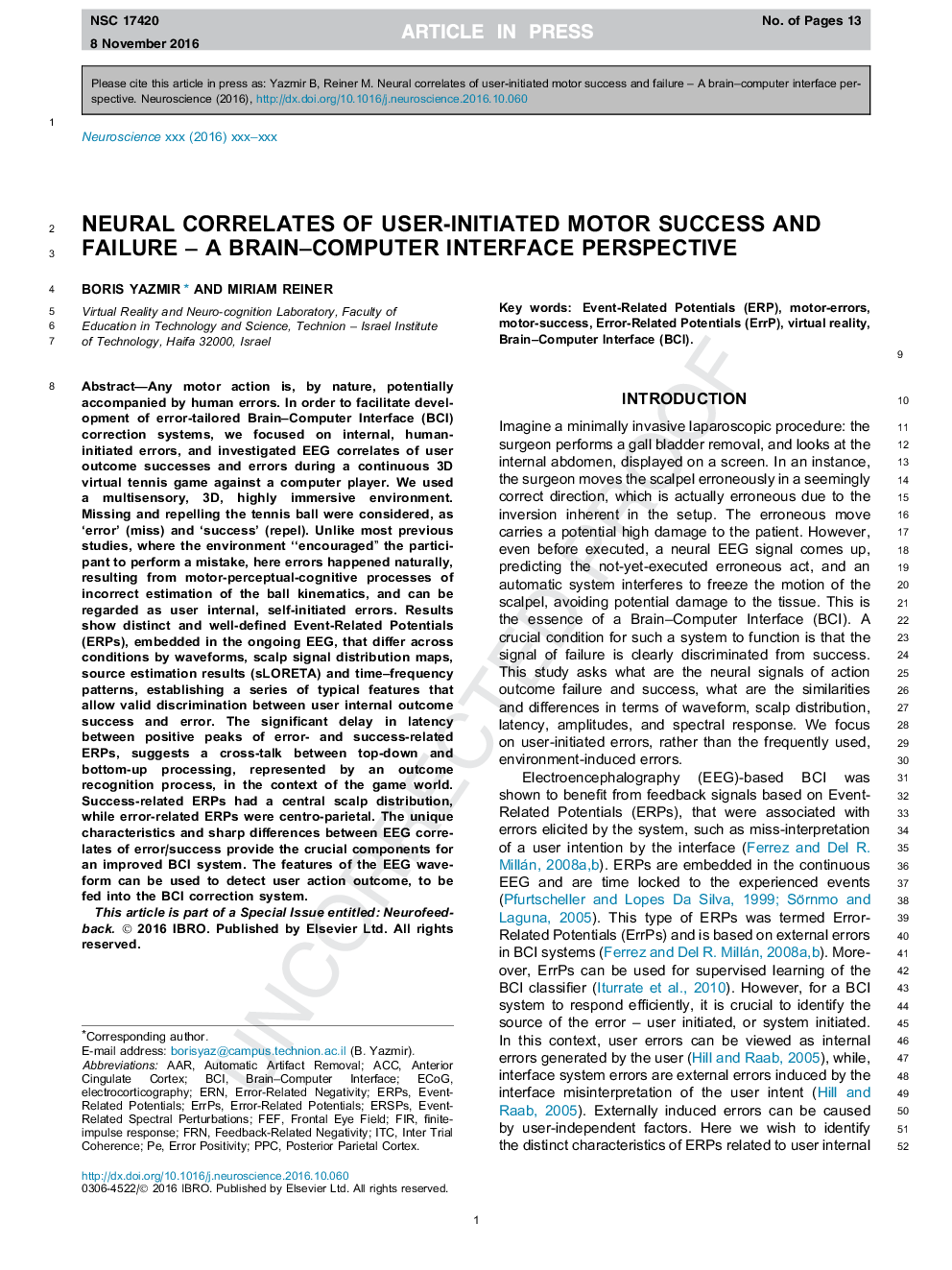| Article ID | Journal | Published Year | Pages | File Type |
|---|---|---|---|---|
| 8840812 | Neuroscience | 2018 | 13 Pages |
Abstract
Any motor action is, by nature, potentially accompanied by human errors. In order to facilitate development of error-tailored Brain-Computer Interface (BCI) correction systems, we focused on internal, human-initiated errors, and investigated EEG correlates of user outcome successes and errors during a continuous 3D virtual tennis game against a computer player. We used a multisensory, 3D, highly immersive environment. Missing and repelling the tennis ball were considered, as 'error' (miss) and 'success' (repel). Unlike most previous studies, where the environment “encouraged” the participant to perform a mistake, here errors happened naturally, resulting from motor-perceptual-cognitive processes of incorrect estimation of the ball kinematics, and can be regarded as user internal, self-initiated errors. Results show distinct and well-defined Event-Related Potentials (ERPs), embedded in the ongoing EEG, that differ across conditions by waveforms, scalp signal distribution maps, source estimation results (sLORETA) and time-frequency patterns, establishing a series of typical features that allow valid discrimination between user internal outcome success and error. The significant delay in latency between positive peaks of error- and success-related ERPs, suggests a cross-talk between top-down and bottom-up processing, represented by an outcome recognition process, in the context of the game world. Success-related ERPs had a central scalp distribution, while error-related ERPs were centro-parietal. The unique characteristics and sharp differences between EEG correlates of error/success provide the crucial components for an improved BCI system. The features of the EEG waveform can be used to detect user action outcome, to be fed into the BCI correction system.
Keywords
PPCITCAARERPsECoGACCERNFEFFRNBCIFIRevent-related spectral perturbationselectrocorticographyerror positivityBrain–computer interfaceBrain–computer interface (BCI)anterior cingulate cortexposterior parietal cortexfeedback-related negativityError-related negativityfrontal eye fieldVirtual realityEvent-related potentials (ERP)Event-related potentials
Related Topics
Life Sciences
Neuroscience
Neuroscience (General)
Authors
Boris Yazmir, Miriam Reiner,
